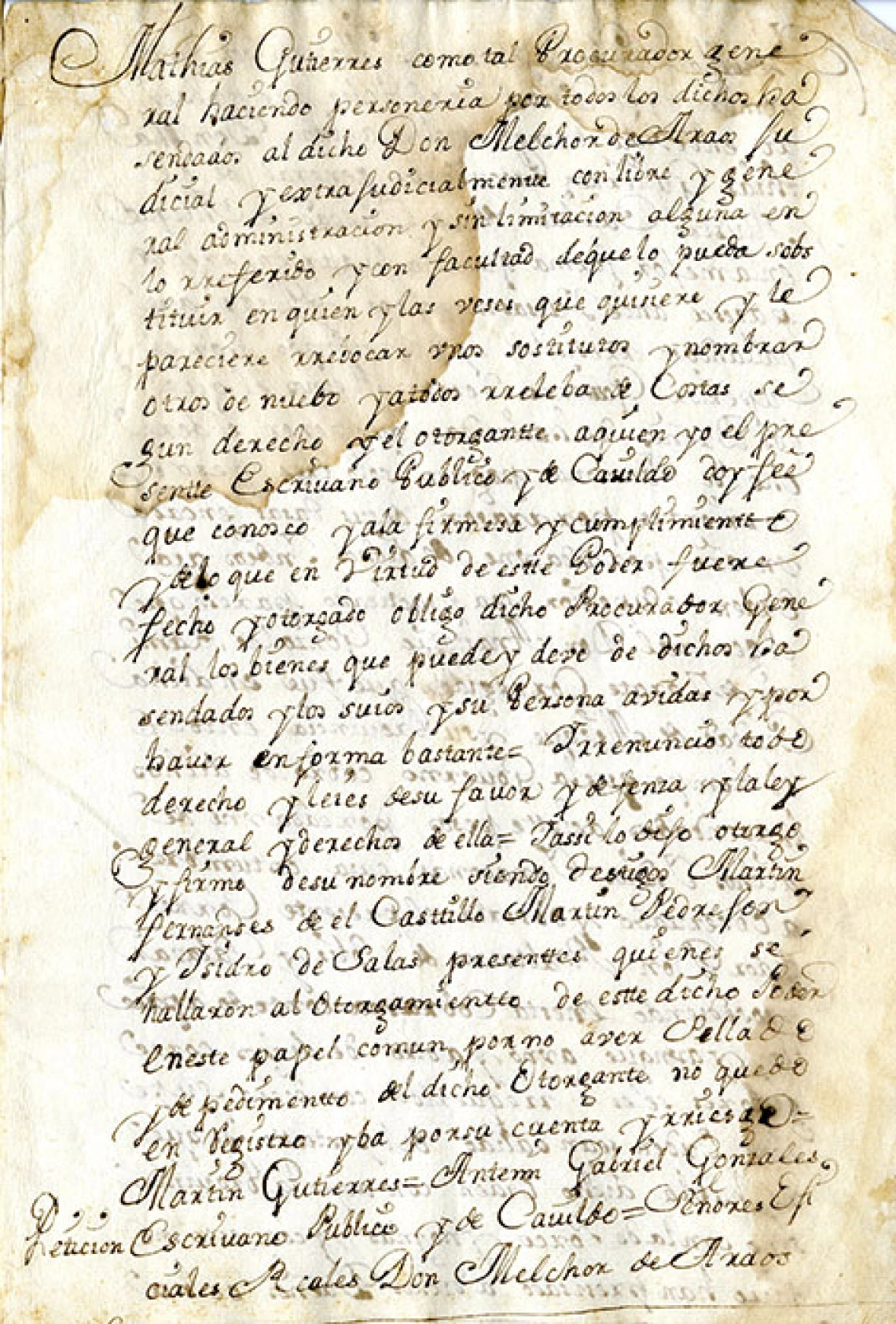Petition, 1734, to the Marqués de Castelfuerte, Viceroy of Peru, on behalf of the tributary Yanaconas Indians

Petition to the Marques de Castelfuerte, regarding the tributary Yanaconas Indians of Peru
Collection area: Borderlands
Collection dates: 1734-1754
Official handwritten copy, dated the 6th of January, 1754, of a petition by the procurador general of the town council of Mizque to the Viceroy of Peru, on behalf of the Yanaconas Indians. It protests the practice of the corregidor, the chief magistrate of the province, of charging an annual tax of seven pesos per head rather than the three pesos and one real stipulated by the Viceroy. A memorial by the Jesuit Pedro Foronda, member of the Spanish Parliament, expresses views on the subject. The Viceroy's decision in favor of the Indians is given. All written in one clear hand, then signed by General Iñigo Abendano, Chief Magistrate and Chief Justice of Potosí, with a countersignature by Manuel Santos de Therrazas.
The Yanaconas were a hereditary class of Indian servants in South America. Early in the history of Spanish conquest, the King granted to his favorites an "encomienda," or rights to use a piece of land, recruit Indian labor, and collect taxes, as long as the encomendero resided on the land. Over time the rights were limited by the government, including the amount of tax, and the fact that the Yanaconas could not be taken and sold as slaves, but must remain as part of the specific piece of land.
Mizque, spelled Misque in the document, is now located in Bolivia; in 1734, however, it was part of the Viceroyalty of Peru, which included much of South America. It was divided into subordinate areas, presidencies, each with its own governor, and administrative and judicial tribunal, or audiencia. The Viceroy was the Governor of the central presidency, and also the presidency of Charcos in which Mizque was located.
A collection guide explains what's in a collection. New to using our collections? Learn how to use a collection guide.
Collection guideAccess this collection
Visit us in person to access materials from this collection. Our materials are one-of-a-kind and require special care, so they can’t be checked out or taken home.
How to cite
Learn how to cite and use materials from Special Collections in your research.
